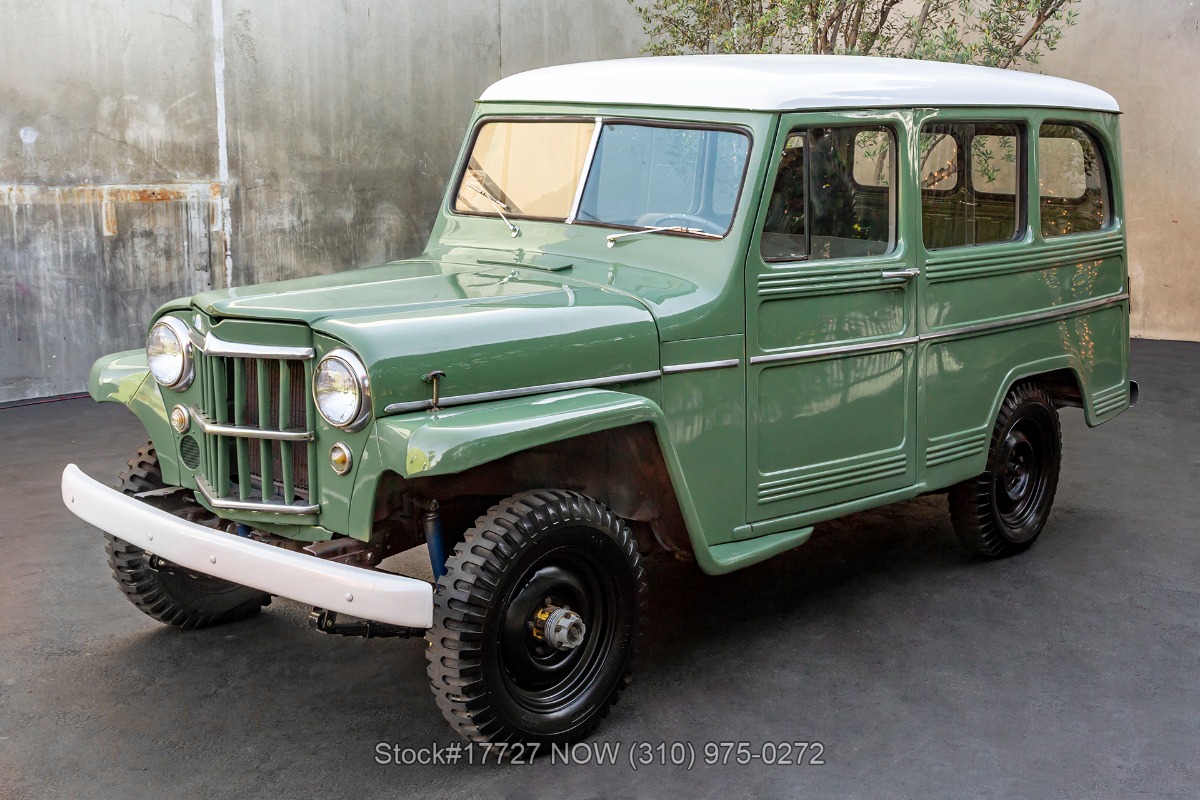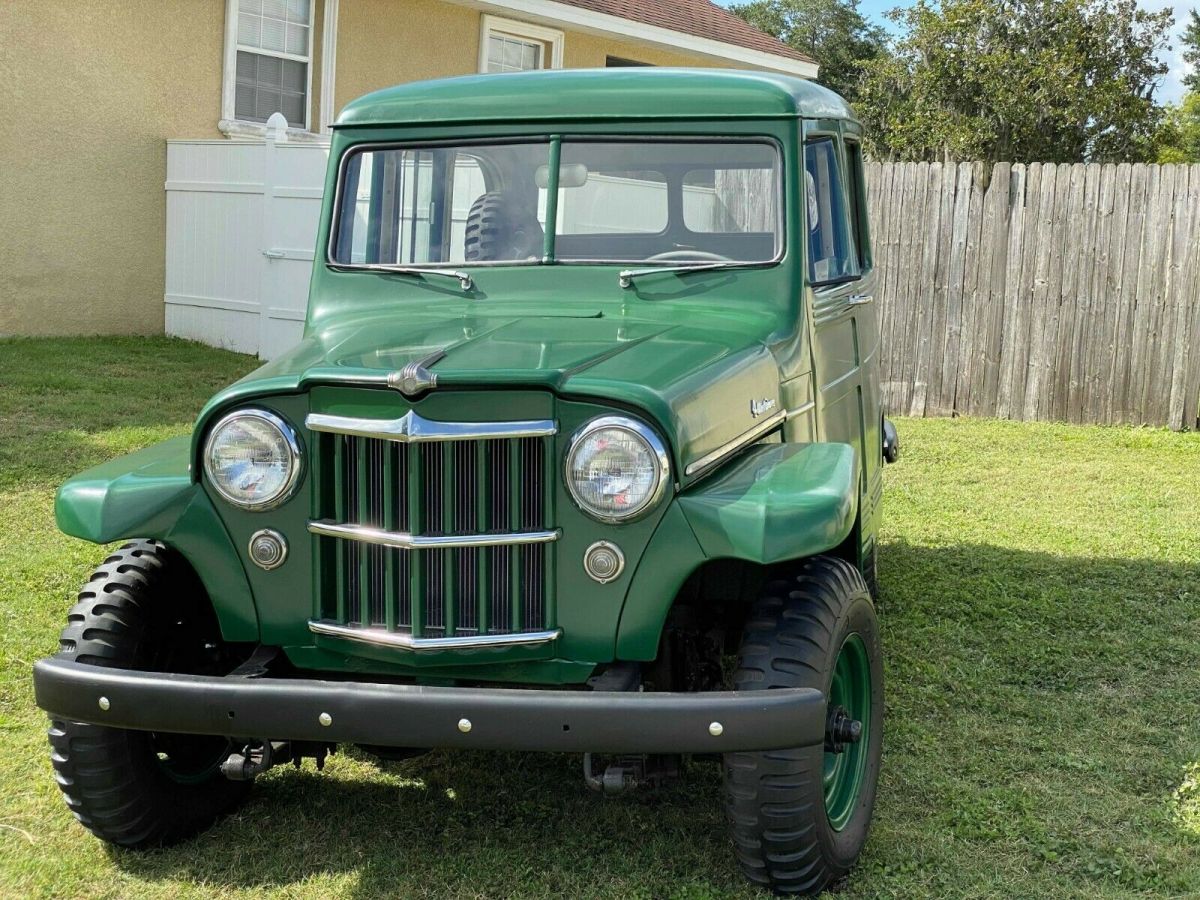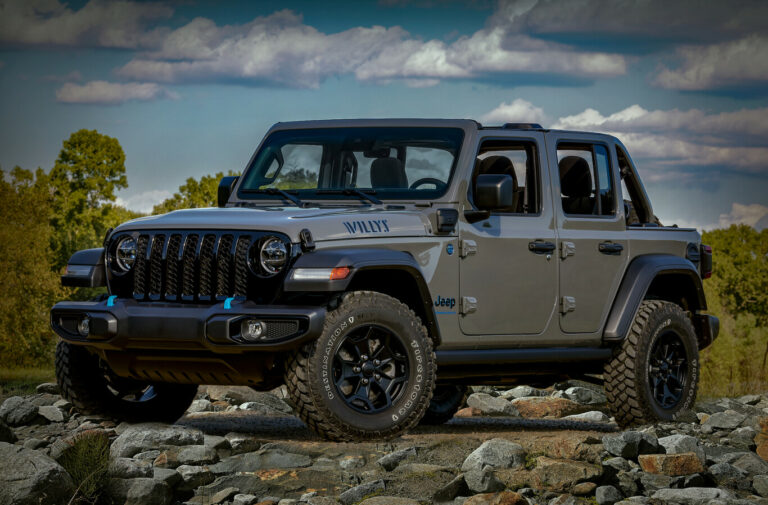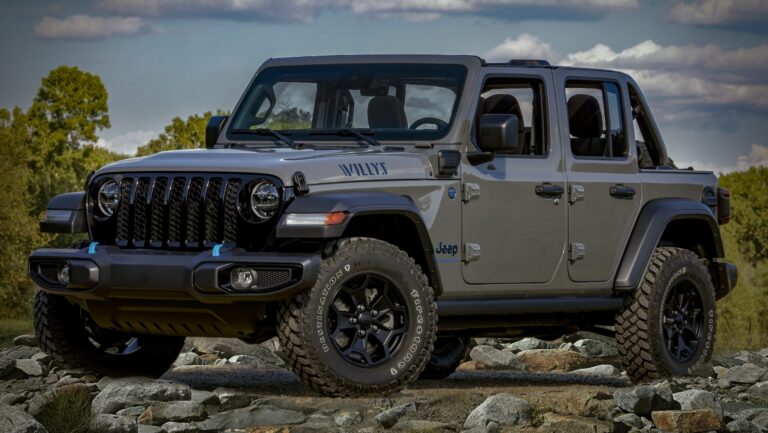Willy’s Jeep Station Wagons For Sale: A Comprehensive Buyer’s Guide
Willy’s Jeep Station Wagons For Sale: A Comprehensive Buyer’s Guide jeeps.truckstrend.com
For many, the mention of "Jeep" conjures images of rugged off-roaders and open-air adventure. But long before the Wrangler became a household name, Willys-Overland Motors, the original creators of the iconic Jeep, pioneered a vehicle that seamlessly blended utility with family-friendly design: the Willys Jeep Station Wagon. These iconic vehicles, produced from 1946 to 1965, were among the very first all-steel, all-wheel-drive passenger vehicles manufactured in the United States, effectively laying the groundwork for what we now know as the Sport Utility Vehicle (SUV). Today, the search for "Willy’s Jeep Station Wagons For Sale" is a quest for a piece of automotive history, a versatile classic, and a unique statement on the road. This comprehensive guide will delve into what makes these wagons so special and how to navigate the exciting world of acquiring one.
A Timeless Classic: Understanding the Willy’s Jeep Station Wagon Legacy
Willy’s Jeep Station Wagons For Sale: A Comprehensive Buyer’s Guide
The story of the Willys Jeep Station Wagon begins in the immediate post-World War II era. With the war over, Willys-Overland sought to translate the proven durability and versatility of their military Jeeps into civilian applications. The result was a vehicle that broke new ground, offering seating for up to seven passengers, ample cargo space, and the option of four-wheel drive – a revolutionary concept for a family vehicle at the time.
Initially powered by the venerable "Go-Devil" flathead four-cylinder engine, later models introduced the more powerful "Hurricane" F-head engine. These wagons were built on a robust truck chassis, ensuring their legendary toughness and capability. Their distinctive, no-nonsense styling, with flat panels, exposed hinges, and a utilitarian charm, has only grown in appeal over the decades. Owning a Willys Jeep Station Wagon isn’t just about driving a car; it’s about experiencing a pivotal moment in automotive evolution.
The Enduring Appeal of Owning a Willy’s Jeep Station Wagon
The market for "Willy’s Jeep Station Wagons For Sale" remains vibrant for several compelling reasons:
- Pioneering Spirit: These wagons represent the very genesis of the modern SUV, offering a unique connection to automotive history.
- Rugged Versatility: While not a modern off-roader, their robust construction and optional 4WD make them capable for light trails, farm work, or simply navigating challenging weather.
- Distinctive Style: Their classic, boxy lines stand out in a sea of modern, aerodynamic vehicles, drawing admiring glances wherever they go.
- Community and Nostalgia: A strong community of Willys enthusiasts exists, offering support, parts, and camaraderie. For many, these wagons evoke memories of a simpler time or family adventures.
- Potential Investment: Well-preserved or expertly restored examples of Willys Jeep Station Wagons For Sale can appreciate in value, making them not just a hobby but a potential asset.

Navigating the Market: Where to Find Willy’s Jeep Station Wagons For Sale
Finding the right Willys Jeep Station Wagon requires patience and a focused search. Here are some of the best places to look:
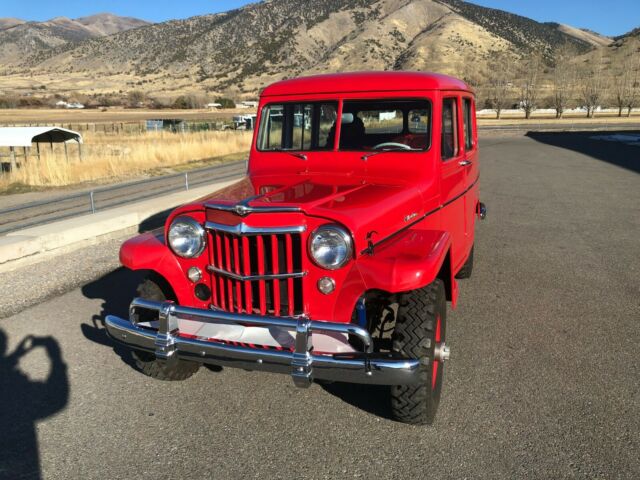
- Online Marketplaces: Websites like eBay Motors, Hemmings.com, Bring a Trailer, and ClassicCars.com frequently list "Willy’s Jeep Station Wagons For Sale." These platforms offer a wide geographic reach.
- Specialty Forums and Clubs: Willys-specific forums and online communities (e.g., The CJ2A Page, WillysTech) often have classified sections where owners sell their vehicles directly. This can be a great way to find well-maintained examples from passionate enthusiasts.
- Classic Car Dealerships: Reputable classic car dealers may occasionally have these wagons in their inventory, often with some level of prior inspection or restoration.
- Auctions: Live and online classic car auctions (e.g., Mecum, Barrett-Jackson, RM Sotheby’s) can be a source for higher-end, restored wagons, though prices can be competitive.
- Word-of-Mouth and Local Ads: Don’t underestimate the power of local classifieds, community bulletin boards, or even simply asking around at car shows. Barn finds still exist!
![]()
Practical Advice: Set up saved searches or alerts on online platforms to be notified when new "Willy’s Jeep Station Wagons For Sale" are listed. Be prepared to travel to inspect promising leads.
What to Look For: Essential Inspection Points When Buying
When evaluating "Willy’s Jeep Station Wagons For Sale," a thorough inspection is paramount. These vehicles are old, and even well-cared-for examples will have quirks.
- Rust, Rust, Rust: This is the biggest enemy of vintage steel. Check the frame, floor pans, rocker panels, wheel wells, and behind trim pieces. Surface rust is manageable; structural rust is a major red flag and costly to repair.
- Engine and Drivetrain: Inquire about the original engine (Go-Devil L4-134 or Hurricane F4-134) and transmission (typically a 3-speed manual, some with overdrive). Look for oil leaks, listen for unusual noises, and check for proper shifting. Engage 4WD if equipped to ensure it functions.
- Suspension and Brakes: Willys wagons use leaf spring suspension. Check for sagging springs or worn bushings. Test the brakes for effectiveness and any pulling. Original drum brakes are common; upgrades to disc brakes are a popular modification for safety.
- Steering: Check for excessive play in the steering wheel, which can indicate worn steering components.
- Electrical System: Original 6-volt systems can be temperamental. Many have been converted to 12-volt, which is a practical upgrade. Ensure all lights, gauges, and wipers function.
- Interior Condition: Assess the condition of the seats, headliner, dashboard, and gauges. Originality is prized, but a clean, functional interior is key.
- Documentation: A clear title is essential. Any service records, past registration, or historical photos add significant value and provide insight into the vehicle’s past.
- Pre-Purchase Inspection (PPI): If you’re serious about a "Willy’s Jeep Station Wagons For Sale" that’s out of your immediate area, or if you’re not mechanically inclined, invest in a PPI by a specialist familiar with vintage Jeeps.
Restoration vs. Driver: Types of Willy’s Jeep Station Wagons For Sale
The condition of "Willy’s Jeep Station Wagons For Sale" can vary wildly, influencing both price and the amount of work required.
- Barn Finds/Project Cars: These are often found in unrestored, non-running, or rough condition. They are the most affordable but require significant investment in time, money, and expertise for restoration. Ideal for experienced DIYers or those planning a full custom build.
- Driver Quality: These vehicles are generally running, roadworthy, and presentable, but may have cosmetic flaws, minor mechanical issues, or older repairs. They are perfect for those who want to enjoy the classic experience without the immediate need for a full overhaul.
- Partially Restored: These fall in between, with some work done (e.g., new paint, engine rebuild). Carefully evaluate the quality of the previous work, as a poorly done restoration can be more costly to correct than starting from scratch.
- Fully Restored/Show Quality: These wagons have undergone a professional, comprehensive restoration, often to original factory specifications. They command the highest prices and are turn-key, ready for shows or immediate enjoyment.
Actionable Insight: Match your budget, mechanical skill level, and desired usage to the vehicle’s condition. A project car might save you money upfront but could cost far more in the long run if you’re paying for professional restoration.
Owning and Maintaining Your Classic Willy’s Jeep Station Wagon
Bringing a Willys Jeep Station Wagon home is just the beginning of the adventure.
- Parts Availability: While not as abundant as modern car parts, many components for Willys wagons are still available through specialty vendors (e.g., Kaiser Willys Auto Supply, Walck’s 4WD), online marketplaces, and enthusiast groups. Reproduction parts are also increasingly common.
- Maintenance: These vehicles are relatively simple mechanically, making basic maintenance accessible for the DIY enthusiast. Regular oil changes, lubrication, and checking fluids are crucial.
- Finding Mechanics: Not all modern mechanics are familiar with vintage vehicles. Seek out shops specializing in classic cars or off-road vehicles.
- Insurance: Obtain classic car insurance, which typically offers better rates and agreed-value coverage compared to standard auto insurance.
- Driving Experience: Be prepared for a different driving experience. These wagons lack power steering, power brakes, and modern safety features. They are best enjoyed at a leisurely pace, embracing the journey rather than rushing to the destination.
Challenges and Solutions
- Rust: The primary challenge. Solution: Thorough pre-purchase inspection, immediate rust mitigation upon purchase, and proper storage (covered, dry environment). Professional bodywork is often required for significant rust.
- Parts Sourcing: Can be time-consuming. Solution: Build relationships with specialty vendors, join online forums, and attend swap meets.
- Modern Traffic: Lack of power and braking compared to modern vehicles. Solution: Drive defensively, consider practical upgrades like disc brakes, 12-volt conversion, or even engine swaps (though this impacts originality and value for purists).
- Fuel Economy: It’s a heavy, older vehicle with a small engine. Solution: Accept it as part of the classic car experience. These aren’t daily commuters built for efficiency.
Price Guide: Willy’s Jeep Station Wagons For Sale
Prices for "Willy’s Jeep Station Wagons For Sale" fluctuate significantly based on year, condition, originality, mechanical soundness, and location. The table below provides a general range.
| Condition Category | Description | Estimated Price Range (USD) | Key Considerations |
|---|---|---|---|
| Project Car | Non-running, significant rust, incomplete, major mechanical issues. Best for full restoration or parts. | $2,000 – $8,000 | Requires substantial investment (time & money). Assess completeness and structural integrity carefully. Often sold "as-is." |
| Driver Quality | Running and driving, roadworthy, some cosmetic flaws, minor mechanical needs. Usable for regular enjoyment. | $8,000 – $20,000 | Good entry point. Expect to address deferred maintenance, minor bodywork, or interior refresh. Look for solid frame and minimal structural rust. |
| Partially Restored | Some restoration work completed (e.g., paint, engine rebuild). Quality of work varies greatly. | $15,000 – $30,000 | Crucial to inspect the quality of the previous work. A poor partial restoration can be more costly to fix than starting from a driver. Ensure the mechanicals match the cosmetic improvements. |
| Fully Restored | Comprehensive restoration to a high standard, near-original condition, excellent mechanicals. | $30,000 – $50,000+ | Turn-key classic. Look for documentation of the restoration process, attention to detail, and correct period parts. Often ready for local shows. Price depends heavily on the quality and originality of the restoration. |
| Show Quality | Concours-level restoration, period-correct, meticulously detailed, perfect condition throughout. | $50,000 – $80,000+ | Top tier. These vehicles are typically flawless, often having won awards. They represent the peak of value and are often purchased by serious collectors or enthusiasts who want the best available example of "Willy’s Jeep Station Wagons For Sale." |
Note: These prices are estimates and can vary based on market demand, specific model year (e.g., early models vs. later Kaiser-era), engine type, 4WD vs. 2WD, and geographical location. Always conduct thorough research and inspection.
Frequently Asked Questions (FAQ) About Willy’s Jeep Station Wagons For Sale
Q1: What years were Willys Jeep Station Wagons produced?
A1: Willys-Overland produced the station wagon from 1946 to 1964. After the acquisition by Kaiser Motors, it continued as the Kaiser-Jeep Station Wagon until 1965.
Q2: Are parts still available for Willys Jeep Station Wagons?
A2: Yes, many parts are still available! Several specialty vendors (e.g., Kaiser Willys Auto Supply, Walck’s 4WD) stock reproduction and New Old Stock (NOS) parts. Enthusiast forums and online communities are also great resources for finding used or rare parts.
Q3: Can I use a Willys Jeep Station Wagon as a daily driver?
A3: While mechanically robust, using a Willys wagon as a daily driver in modern traffic can be challenging due to lack of power steering, power brakes, and modern safety features. They are best enjoyed as weekend cruisers, hobby vehicles, or for light utility tasks.
Q4: What’s the difference between a Willys Station Wagon and a Jeep Cherokee?
A4: The Willys Station Wagon is the direct ancestor of modern SUVs, produced from 1946-1965. The Jeep Cherokee (SJ) was introduced in 1974, a much larger and more modern vehicle, though it carried on the spirit of a versatile family utility vehicle.
Q5: Are Willys Jeep Station Wagons a good investment?
A5: Well-maintained, original, or professionally restored "Willy’s Jeep Station Wagons For Sale" have shown appreciation in value over time, especially the 4WD models. Like any classic car, their investment potential depends heavily on condition, rarity, and market demand.
Q6: What engines came in these wagons?
A6: Early models (1946-1950) primarily used the "Go-Devil" 134 cu in (2.2 L) L-head (flathead) four-cylinder engine. From 1950 onwards, the "Hurricane" 134 cu in (2.2 L) F-head four-cylinder engine was introduced, offering more power. Some later models also offered a six-cylinder option.
Q7: Is 4WD standard on all Willys Jeep Station Wagons?
A7: No, 4WD was an option, not standard. Many wagons were produced as 2WD models. 4WD versions are generally more sought after and command higher prices due to their enhanced capability and rarity.
Conclusion
The search for "Willy’s Jeep Station Wagons For Sale" is more than just buying a vehicle; it’s about acquiring a piece of American automotive history, a symbol of rugged individualism, and a testament to pioneering design. These wagons offer a unique blend of vintage charm and surprising utility, promising an engaging ownership experience that connects you with a passionate community and a bygone era. Whether you’re seeking a project to restore to its former glory or a ready-to-drive classic, the journey of finding and owning a Willys Jeep Station Wagon is an adventure in itself, ensuring that this timeless classic continues to roam the roads for generations to come.
